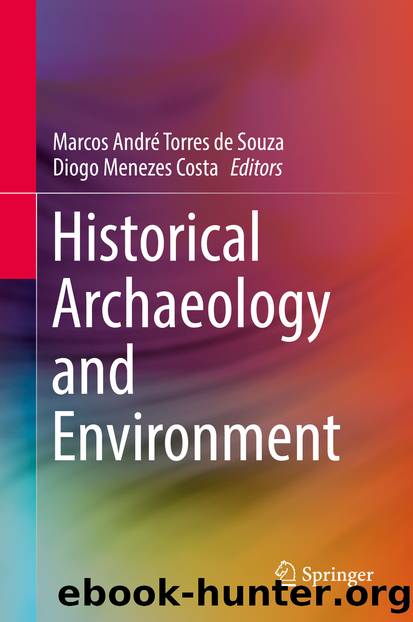Historical Archaeology and Environment by Unknown

Author:Unknown
Language: eng
Format: epub
ISBN: 9783319908571
Publisher: Springer International Publishing
7.2 The End of the Fishermen
The fishermen’s disappearance was caused by the destruction of natural resources, but it would be naïve to state that they did not participate in this destruction themselves. The modern threat to their way of life left them no alternative but to overexploit the rivers. In a cruel and perverse turn, modernity placed them under the capitalist pressure of having to cater to a population in the process of exponential growth and hygienic urbanization; thus, fishermen were driven to self-destruction through the adoption of increasingly devastating fish-obtaining technologies. This is not the first archaeological glimpse into capitalist modernity’s ability to make the existence of fishermen unsustainable, as the case of Antarctic seal hunters illustrates (Zarankin and Senatore 2007).
The former presence and process of disappearance of fishermen in São Paulo can be traced through different sources : excavating the city, rare vestiges can be found that refer to them: fishing-net weights appear (Zanettini Archaeology 2009), made of ceramics or lead, as well as some faunal vestiges in little-analyzed urban rubbish bins (Zanettini Archaeology 2011). Extensive fishing-net weight production by large-scale pottery-manufacturing sites indicates the role of fishing on the plateau.
Newspapers also referred to fishermen both as disrupting figures within the image of a modern city because of their “primitive” and allochronic fishing techniques and sometimes as unionized workers as fishing became recognized as an important profession necessary to meeting the city’s demands. Fishing, the fishermen, and their cities, rivers, and lakes all represented other temporalities, heterochronies opposed to the homogeneous time which super-modernity attempted to impose (Gonzalez-Ruibal 2008).
Due to a population boom between the 19th and the 20th century, fish consumption increased. An emerging context of commercialization began to require greater controls from the State over fishing activities and over other fish-obtaining technologies. Harpoons and angling were gradually replaced by the use various types of increasingly wider and more complex nets. Especially in the early twentieth century, the nationalization of fishing activities progressed and brought about the earliest forms of fishing-activity industrialization in the city (Ramalho 2014). In the 1890s the Santista Fishing Company established its headquarters in São Paulo to better exploit the fishing industry, its products’ manufacturing, and trade. The company built its main office at the center of the city and began to take orders for any amount of fish, oysters, and prawns (O Mercantil [1891], 13 January, p. 3).
Traditional techniques gained a new dimension and were redefined to obtain more and more fish to satisfy increased demand. The intensification of indigenous techniques , such as the pari —employing nets and the timbó and the use of ichthyo-toxicity to paralyze fish—elicited increasing criticism from more and more quarters and accusations of killing more fish than it was possible to collect and eat. Also, both pari and fishermen were increasingly forced to share their space with the members of the elite yachting clubs, competing over territories where the latter group saw coexistence as out of the question. Bottom trawling and trawling nets were also the object of scalding disapproval but were nonetheless increasingly used.
Download
This site does not store any files on its server. We only index and link to content provided by other sites. Please contact the content providers to delete copyright contents if any and email us, we'll remove relevant links or contents immediately.
Kathy Andrews Collection by Kathy Andrews(10519)
The remains of the day by Kazuo Ishiguro(7551)
Spare by Prince Harry The Duke of Sussex(4195)
Paper Towns by Green John(4169)
The Body: A Guide for Occupants by Bill Bryson(3800)
Be in a Treehouse by Pete Nelson(3212)
Harry Potter and the Goblet Of Fire by J.K. Rowling(3041)
Goodbye Paradise(2961)
Never by Ken Follett(2880)
Into Thin Air by Jon Krakauer(2701)
The Remains of the Day by Kazuo Ishiguro(2617)
The Genius of Japanese Carpentry by Azby Brown(2609)
The Cellar by Natasha Preston(2595)
Drawing Shortcuts: Developing Quick Drawing Skills Using Today's Technology by Leggitt Jim(2532)
120 Days of Sodom by Marquis de Sade(2436)
Architecture 101 by Nicole Bridge(2350)
The Man Who Died Twice by Richard Osman(2297)
Machine Learning at Scale with H2O by Gregory Keys | David Whiting(2289)
Fairy Tale by Stephen King(2069)
